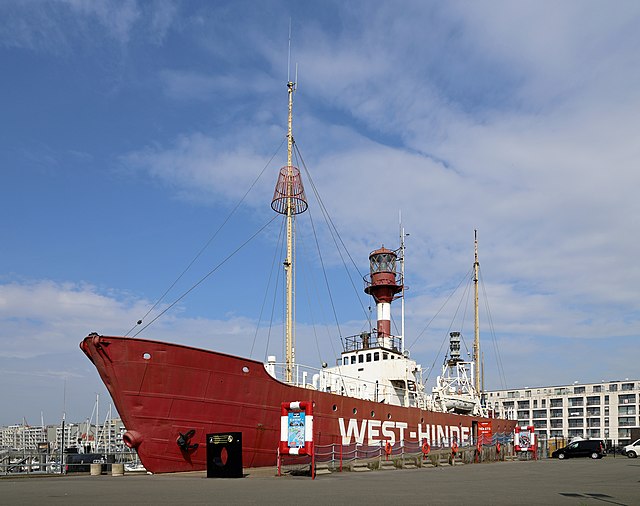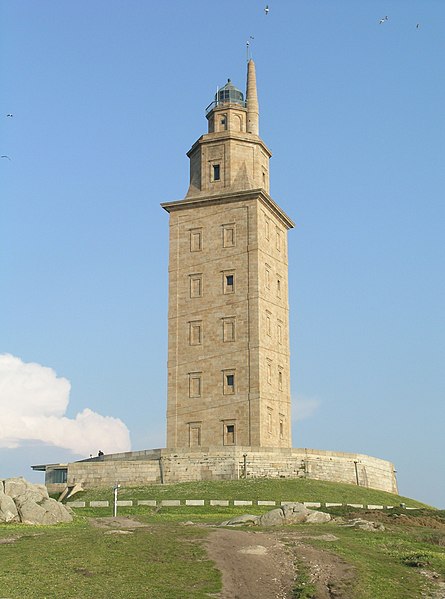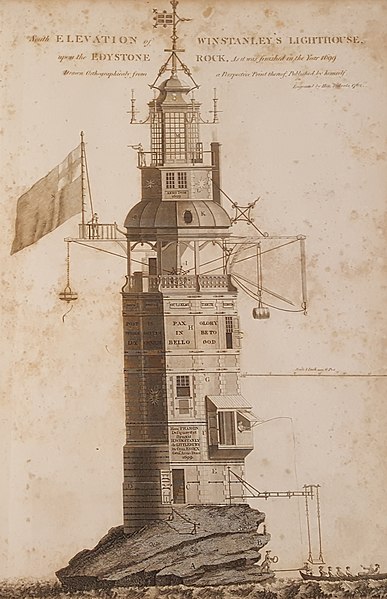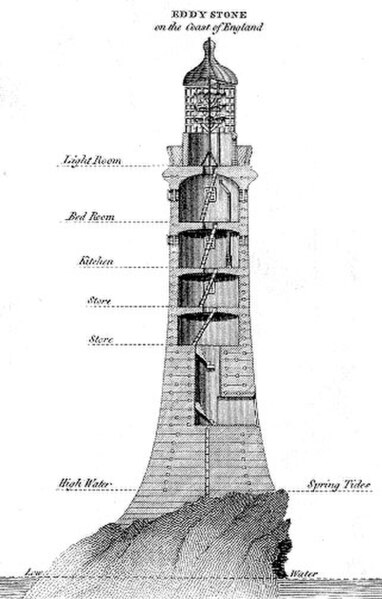A lightvessel, or lightship, is a ship that acts as a lighthouse. They are used in waters that are too deep or otherwise unsuitable for lighthouse construction. Although some records exist of fire beacons being placed on ships in Roman times, the first modern lightvessel was off the Nore sandbank at the mouth of the River Thames in London, England, placed there by its inventor Robert Hamblin in 1734. The type has become largely obsolete; lighthouses replaced some stations as the construction techniques for lighthouses advanced, while large, automated buoys replaced others.
Lightship Finngrundet, now a museum ship in Stockholm. The day markers can be seen on the masts.
Fehmarnbelt Lightship, now a museum ship in Lübeck
Bürgermeister O´Swald II was the world's largest manned lightship, the last lightship at position Elbe 1. In the picture on a visit to Ystad 12 July 2017.
Former Belgian lightship West-Hinder II, now a museum ship in Zeebrugge
A lighthouse is a tower, building, or other type of physical structure designed to emit light from a system of lamps and lenses and to serve as a beacon for navigational aid, for maritime pilots at sea or on inland waterways.
The Lighthouse of Praia da Barra, on the west coast of Portugal
The Tower of Hercules lighthouse in northwest Spain
Original Winstanley lighthouse, Eddystone Rock, by Jaaziell Johnston, 1813.
John Smeaton's rebuilt version of the Eddystone Lighthouse, 1759. This represented a great step forward in lighthouse design.








